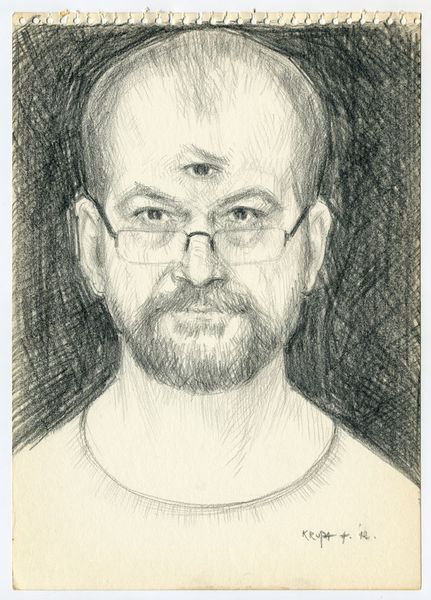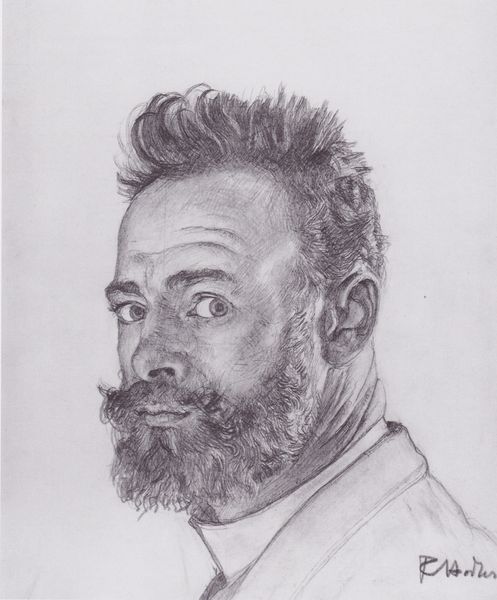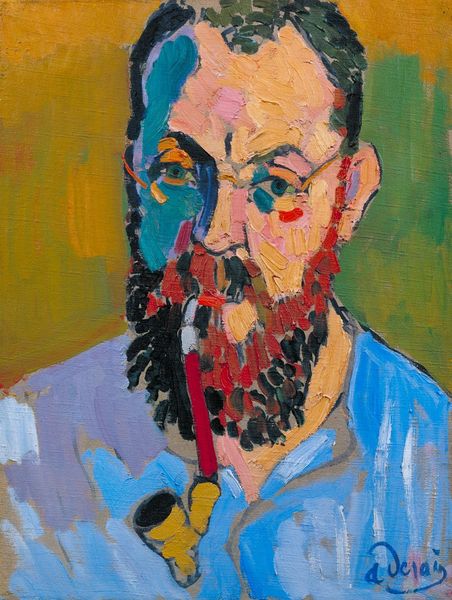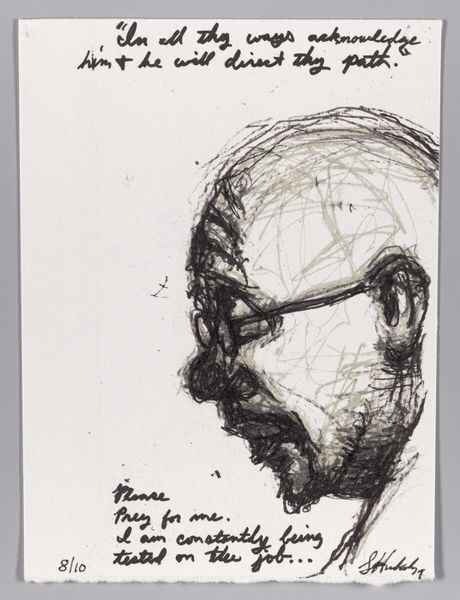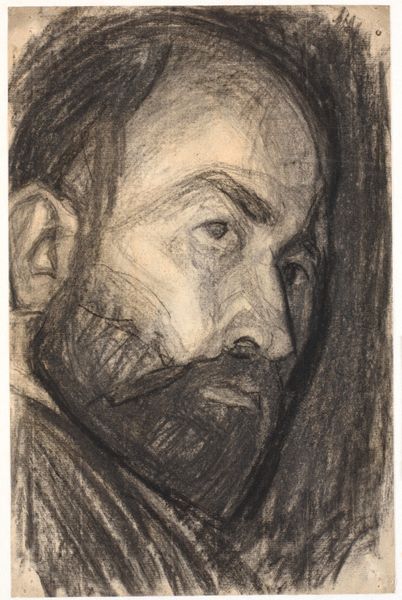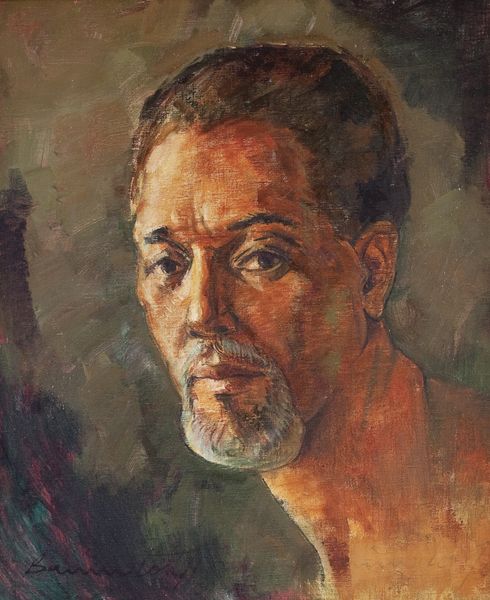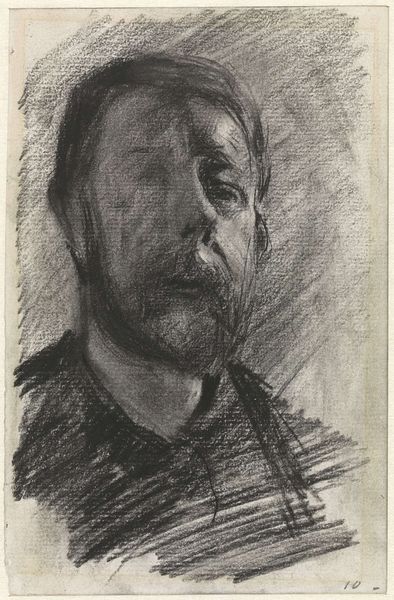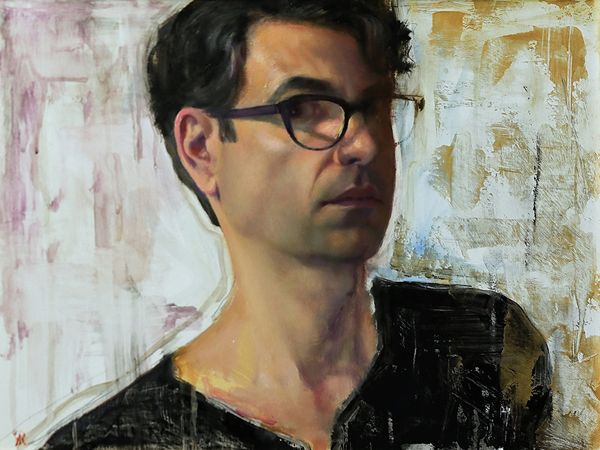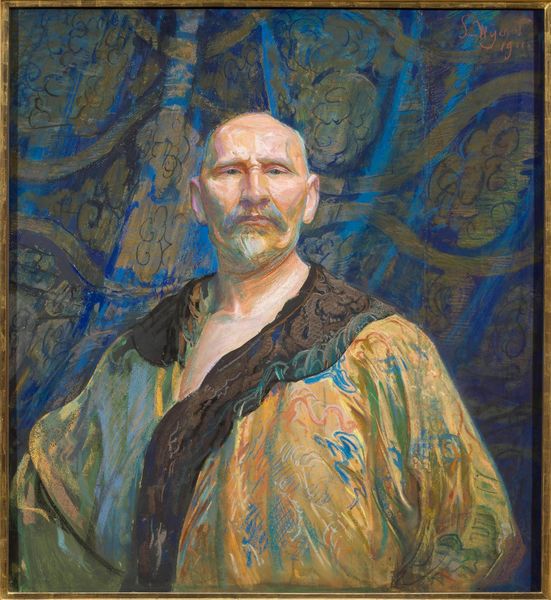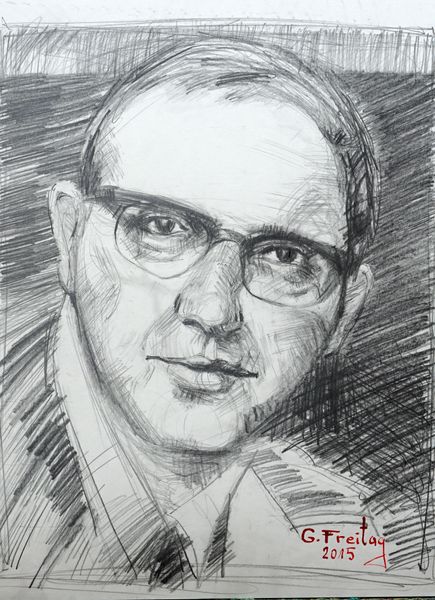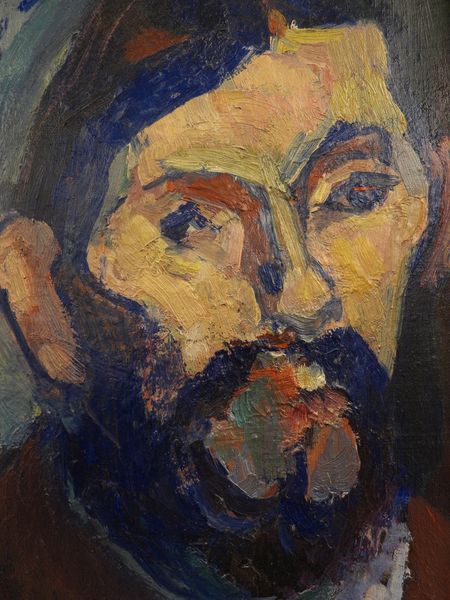
oil-paint
#
portrait
#
contemporary
#
oil-paint
#
portrait reference
#
famous-people
#
portrait head and shoulder
#
animal portrait
#
animal drawing portrait
#
portrait drawing
#
facial study
#
facial portrait
#
portrait art
#
fine art portrait
#
realism
#
digital portrait
Dimensions: 80 x 80 cm
Copyright: Copyright: Gazmend Freitag
Curator: This is Gazmend Freitag’s “Ali Andress,” painted in 2022. It's an oil-on-canvas portrait that immediately strikes me with its direct gaze. Editor: It's captivating, almost unsettling. There's a rawness to the brushwork that suggests urgency. I wonder about the texture of the paint itself; is it thickly applied, impasto style, or are we seeing more controlled layers? Curator: Let's consider Freitag's other works. Many grapple with themes of identity, displacement, and belonging. I think the directness of the subject's gaze speaks to Freitag's broader project, questioning representation and demanding a confrontation with the viewer. Are we implicated in the act of looking? Editor: The materiality contributes significantly. The artist's process, visible in the strokes, contrasts with the highly refined techniques we often associate with portraiture, doesn’t it? I’d like to learn about Freitag’s studio practice; do they prepare the canvas in any specific way, what type of oil paints do they prefer, how long does it take? Curator: I am most interested in the portrayal of masculinity presented. The intensity of the gaze feels performative, constructed. Consider the tradition of portraiture itself - it’s traditionally been a tool of power and status. How does Freitag subvert or challenge that history here? What narratives are at play when we frame the piece within queer theory and representation? Editor: That is very valid. From a material perspective, let’s observe how the palette choice underscores or challenges these narrative elements you speak of. The blue background, contrasting with the skin tones—did the availability and affordability of these specific pigments influence the decision, and how might this relate to Freitag’s exploration of social contexts? Curator: Absolutely. Framing "Ali Andress" within the context of contemporary portraiture also raises pertinent questions about authenticity and artifice. The unidealized representation invites dialogue around the politics of visibility. This feels intentional. Editor: In terms of craftsmanship and historical methods, what about the canvas preparation, or even the sourcing of the brushes used? These elements influence the image just as meaningfully. Thinking materially allows us to trace artistic lineage. Curator: Indeed. Ultimately, Freitag’s “Ali Andress” prompts us to interrogate not just what we see, but how and why we see it, both within the historical context of portraiture, but also within broader societal narratives. Editor: Precisely. The interplay of process and material lends the work a weight that transcends mere representation, allowing for an authentic encounter.
Comments
No comments
Be the first to comment and join the conversation on the ultimate creative platform.
